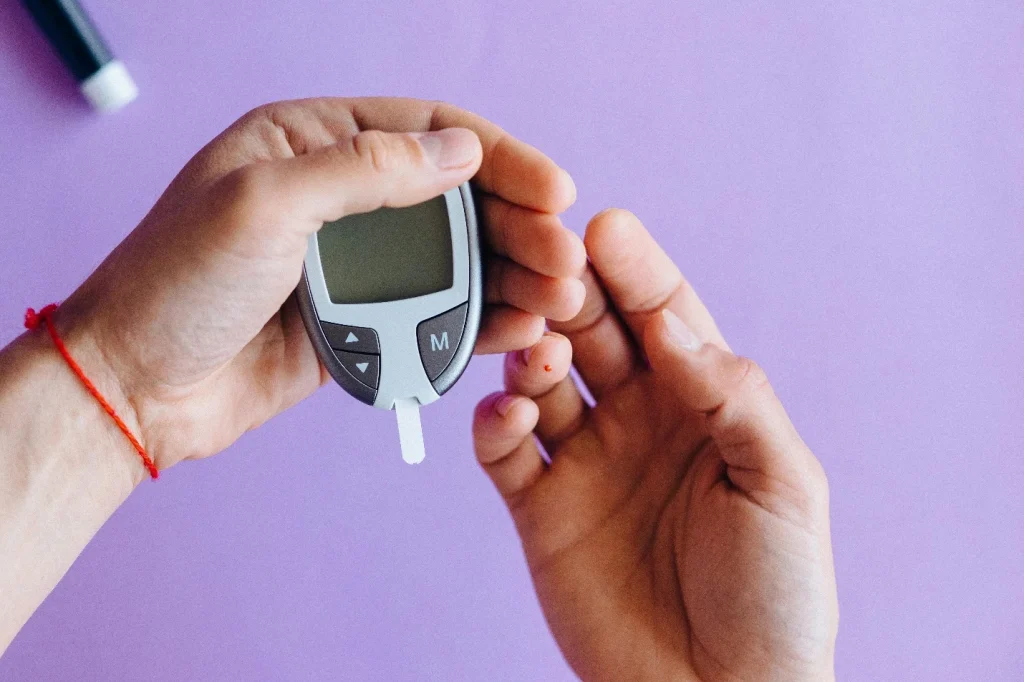Feeling sluggish, craving snacks all the time, or getting moody between meals? You’re not alone. Many people experience these ups and downs without realizing that their blood sugar levels may be fluctuating significantly. The best part? You don’t need a complete lifestyle overhaul to fix it.
Staying steady throughout the day starts with a few smart habits. The good news is that most of these are simple changes you can make to your current routine. In this article, we’ll walk through some easy-to-miss things that might be getting in the way of better balance, plus what you can do about it.
Readers also enjoyed this connected article—check it out.
A Morning Routine That Includes Protein
Your first meal of the day can set the tone for the rest of your day. If breakfast is mostly carbs—like toast, juice, or cereal—you might feel great for an hour but crash soon after. Adding protein in the morning helps your body stay steady for longer. Think eggs, Greek yogurt, or a plant-based protein smoothie. These help you feel full, boost energy, and support better control throughout the day. Skipping protein is one of the most common mistakes people make when trying to improve their daily rhythm.
The Right Supplement Support Makes a Difference
Even if you eat a balanced diet, your body may still require a little extra support. Lifestyle, age, and stress can all affect how your body manages glucose. Supplements can fill in those gaps and support your efforts naturally. Supplements like Gluco Control from Keystone Compounding Pharmacy are specifically created to support insulin sensitivity and overall glucose metabolism. Such supplements include key ingredients like berberine, chromium, and alpha lipoic acid—all known for their ability to promote better balance. Adding this to your daily routine could be the missing piece you didn’t know you needed.
Timing Your Carbs Throughout the Day
Eating too many carbohydrates in one sitting—especially without protein or fat—can lead to big spikes and crashes. A smarter approach is spreading them out across meals and snacks. Pairing carbs with fiber or healthy fats helps slow down the digestion process and reduce the impact. For example, have an apple with nut butter or pair whole grains with lean proteins. This kind of mindful pairing helps you stay even-keeled and cuts down on late-day cravings or sudden energy dips.
Staying Hydrated
Most people don’t drink enough water during the day. However, hydration plays a significant role in how your body processes and flushes out excess glucose. When you’re dehydrated, it’s harder to maintain balance. Try keeping a reusable water bottle with you and aim to sip consistently. Drinking a glass of water before meals can also help with portion control and digestion. It’s a small habit, but it makes a noticeable difference over time.
Managing Stress Through Simple Habits
When you’re stressed, your body releases hormones that can affect how it handles glucose. That’s why stress management is just as important as what you eat. Short daily habits—such as breathing exercises, stretching, or taking a walk outside for fresh air—can help lower cortisol levels and promote a calmer state of mind. Even five to ten minutes can help. You don’t need a full yoga class or fancy meditation app. The goal is to find simple ways to reset when life gets hectic.
Getting Enough Sleep
Not sleeping well doesn’t just leave you feeling tired—it can also throw off your entire system. Poor sleep affects how your body handles insulin and can lead to more cravings and mood swings the next day. Even just one or two nights of bad sleep can make a difference. Aim for at least 7 to 9 hours each night. Try winding down earlier, turning off screens, and creating a calming nighttime routine. Your body—and your daily energy—will thank you for it.
Moving Your Body After Meals
One of the simplest ways to support balance is by moving after you eat. You don’t need a full workout—just a short walk around the block, a light stretch, or even standing while doing dishes can help. Movement encourages your muscles to use glucose more efficiently, which helps prevent spikes in blood sugar after meals. This habit is easy to incorporate into your routine and doesn’t require any equipment or a gym. A 10–to 15–minute walk after lunch or dinner can make a significant difference.
Watching Out for Hidden Sugars in Healthy Foods
Many packaged foods that appear healthy are actually loaded with added sweeteners. Granola bars, flavored yogurts, and even salad dressings can sneak in more than you realize. These extras can disrupt your progress, especially if you’re trying to maintain a steady pace throughout the day. Always read the label and check the ingredients list. Look for terms like cane juice, malt syrup, or anything ending in “-ose.” Choosing whole foods with fewer ingredients can help you stay on track.
Balancing Gut Health with the Right Foods
Your gut and your metabolism are closely connected. When your digestive system is in good shape, it helps your body process food more efficiently and respond better to what you eat. Add more fermented foods, such as kefir, sauerkraut, or kimchi, to your meals. Fiber-rich foods, such as oats, beans, and leafy greens, also nourish beneficial gut bacteria. A healthy gut doesn’t just support digestion—it can play a role in energy levels, cravings, and mood.
Personalizing Your Plan Based on Your Body’s Needs
Everyone’s body reacts differently. What works well for one person might not work at all for someone else. That’s why it’s important to track your own habits, energy, and meals to see what helps you feel your best. Some individuals may benefit from personalized support, including customized solutions tailored to their specific needs. Working with a professional can help you identify what’s missing and build a plan that fits your lifestyle, rather than just offering general advice.
Balancing your blood sugar naturally doesn’t have to feel like a full-time job. Often, the most effective changes are small ones—adding a walk here, more protein there, or getting better sleep. By filling in the gaps in your daily habits and exploring the right tools and support, you can feel better, stay energized, and take lasting control of your health. Keep it simple, stay consistent, and give your body what it needs to thrive.
Browse all categories in one place by returning to 2A Magazine.







